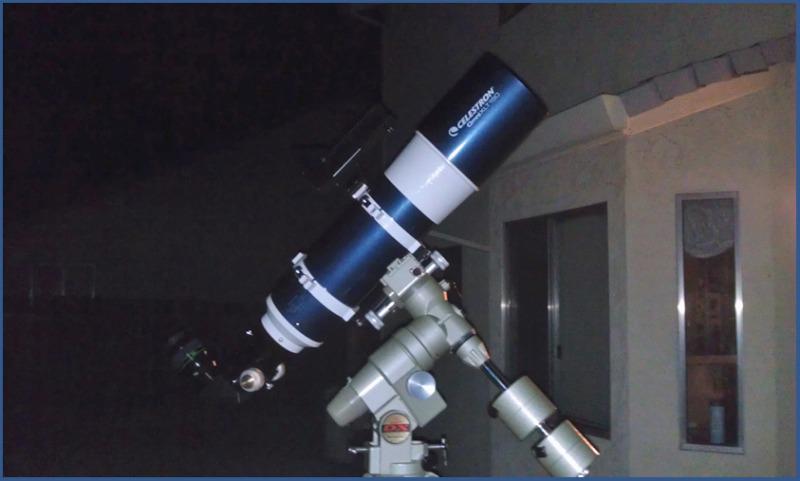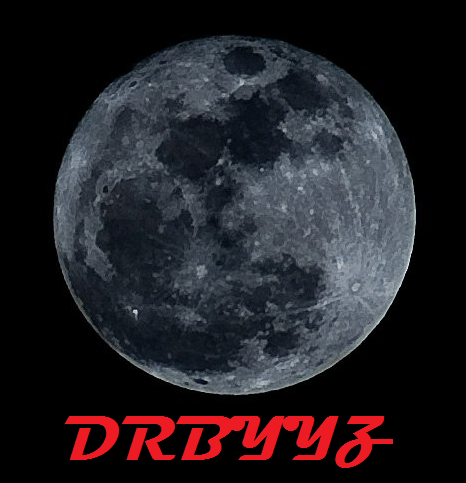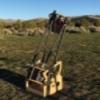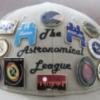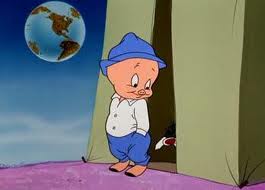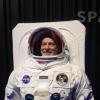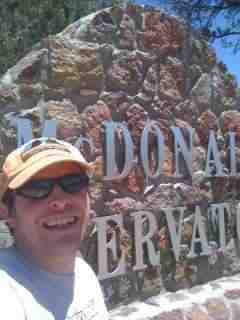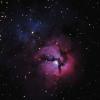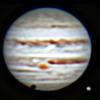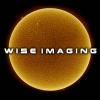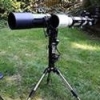
The Herschel 400's and beyond - looking for input
#1

Posted 04 February 2013 - 09:23 PM
So I just ordered The Complete Guide to the Herschel Objects: Sir William Herschel's Star Clusters, Nebulae and Galaxies based on the review here and in comparision to O'Meara's Herschel's 400 (great book but I don't need the substantial "finder" help provided.
I belong to a club where this year I'll have about 25 days (depending how many are "rain" delayed) to start this project.
I have a C8 on a goto mount and enough EP's to give me a wide range of powers. I also have the 400 and 400II lists in Deepsky for viewing and log details.
I'd appeciated any specific type of advice you have on doing the 400 and others with a goto C8.
Thanks.
#2

Posted 05 February 2013 - 02:02 AM
...................KNOWN PROBLEMS WITH THE ASTRONOMICAL LEAGUE'S...
......................HERSCHEL II OBSERVING PROGRAM'S LIST.........
NGC 1990: Alleged Nebula around Epsilon Orionis. Does not exist, and is apparently an observation of light scattered by the telescope around that star. A number of observers, as well as quality photographs show nothing other than the glow of scattered light around Epsilon.
NGC 2253: Alleged Open Cluster in Camelopardalis. No recognizable cluster at that location. Only a few scattered groups of field stars can be found within half a degree of the plotted position (6h 42.6m +66 deg. 24', eq. 2000.0), and none seem to form a recognized cluster. The plotted location is slightly uncertain, and Uranometria 2000.0 incorrectly plots it as a galaxy at 6h 43.2m +65 deg. 40.5', which is the location of the tiny 14th magnitude elliptical galaxy MCG +11-9-7 (CGCG 308-037). SIMBAD and the DSS also respond to the entry query of NGC 2253 as this small galaxy at the second location. However, this galaxy is quite faint (nearly 15th magnitude) and nearly stellar at low to moderate powers in my ten inch, thus, is probably not one which Herschel logged. In any case, no cluster can be seen at the positions which match Herschel's description.
***FROM NGC/IC WEB PAGE:
NGC 2253 can't be found. There is nothing at W. Herschel's position (06 36.8 +66 53, 1950), nor is there much to suggest a systematic error in the positions of the other objects found that night (NGC 2347 = III 746 and NGC 2403 = V 44). Herschel's description -- "A vF patch or S cl of eS st(ars)" -- as well as the fact that he included this object in his class VII (number 54) suggests that we should be looking for a small, tight group of faint stars. There is a scattered group of (10 or 15 stars of magnitudes 14 to 16) is at 06 37.4 +66 22 (1950), but it is not a "patch" by any stretch of the definition of that word. Herschel's description might just as well fit UGC 3511 (06 38 45.8 +65 15 22, 1950), a rather patchy late-type spiral galaxy, but the position is off by random amounts in both coordinates. Similarly, the CGCG object at 06 38.2 +65 43 (1950) is probably not N2253. Since there are no reasonable solutions that we can easily see, we'll just have to let NGC 2253 be "Not found" for the time being.
- Dr. Harold G. Corwin, Jr.
NGC 6526: Alleged nebula in Sagittarius north of M8 and southeast of M20. This entry is mis-identified on many atlases as a diffuse nebula north of M8. The object plotted as NGC 6526 on Sky Atlas 2000.0 (2nd edition), Megastar, and Uranometria 2000.0 is actually a large star cloud (0.6 deg. E-W x 0.3 deg. N-S), with many faint members at R.A. 18h 4.8m, Dec. -23 deg. 35'. This cloud contains little or no nebulosity which can be seen visually. There is some historical information which suggests that the nebula William Herschel cataloged as NGC 6526 is actually an earlier observation of part or all of the Lagoon Nebula M8 (NGC 6523). A one degree declination error on the part of Caroline Herschel apparently put NGC 6526 in the location shown on many atlases.
NGC 6991: Alleged open cluster in Cygnus. No object matching catalog size is seen at the original Uranometria 2000 1st edition's plotted location (R.A. 20h 56.6m Dec. +47 deg. 25'). However, about 10 arc minutes to the west at 20h 54.9m, +47 deg. 25' (Uranometria 2000 Field Guide, 2nd ed.), or about 3 arc minutes west of the mag. 5.7 star HD 199478, there is a group of faint stars involved with a few bright ones which is probably the cluster. Unfortunately, the Milky Way in this area is often as rich as this "cluster" is. At best, the object may have had a position error in R.A., and at worst, this object may be merely a Milky Way condensation.
Good luck and clear skies to you.
#3

Posted 05 February 2013 - 04:55 AM
The Herschel 400 Observing Guide by Stephen O’Meara seems more usable for the pursuit of the first 400, but both books are excellent.
I'm working off the Herschel 400 list with my 6" F5 Celestron refractor with my Vixen GP-Dx mount. Though originally I didn't want to list everything Ive found with notes and drawings and just thought Id use the list as a guide to give me a direction to follow, now I'm realizing that recording everything seems to be fun also especially without the distraction of other friends around me that seem to take away more from this hobby for me than adding to it.
Though I have no interest in GoTo scopes to find these objects since to me that takes the fun out of everything, there are times when I wish I had the help.
What I find most amazing about these Herschel objects is that just about everything in the sky seems to be listed by Herschel and so many of them are right on top or right beside objects we have been looking at for ages.
I choose to use my 6" F/5 refractor because its a simple but beautiful scope optically, and sometimes makes even the obvious easy to find objects a little more challenging than using my larger scopes.
I'd say 90 percent of the observing I'm doing is just in my Suburban back yard, again making it that much more challenging.
On the more difficult objects, I may have to mount my 6" refractor piggy back on my C11 or C14 and use the larger scopes first, then see if I can detect anything in the smaller 6" refractor. If this still doesn't work, I'll have to venture into darker skies and I know on many I will have to but that's what makes this so fun.
Since I work and hold a regular job, my time is limited so this is going to take several years but that doesn't mater really. It gives me a very fun direction to take this hobby, something few people I know, understand.
One final comment, every thing you need in the way of Log Entries you can find here. This really is your one stop shop for everything related to Log Entry information:
http://www.astronomy....com/index.html
Good luck with all of this, its unbelievably fun stuff to me!!
...Ralph in Sacramento
#4

Posted 05 February 2013 - 08:47 AM
I'd appeciated any specific type of advice you have on doing the 400 and others with a goto C8.
Begin at the beginning, and go on to the end: then stop.
And of course darker skies are always better.
#5

Posted 05 February 2013 - 10:17 AM
With a goto scope most of these should be pretty obvious the second you look in the eyepiece, especially if you know what you are looking for.
#6

Posted 05 February 2013 - 12:56 PM
The club holds about 5 3 night viewing session in this location, and I'll probably go the the Oregon Star party this year for an additional 3 or 4 days.
David thanks for that information, along with that I got the astronomical league stuff on the Herschels. I'm not in a hurry and plan on making a low, medium, and high power observation on each. Not sure if I will image all of them, but I will those I really like.
On some trips I'm planning on using my C5 as a comparison scope at the dark site to see how well it does. I'll post my trials and tribulations (observations) here when I'm into the project. First trip is schedule march 8th.
#7

Posted 06 February 2013 - 01:41 AM
Have a great time you guys chasing all those fun objects with whatever telescope you have.
Clear skies;
Steve Coe
#8

Posted 09 February 2013 - 05:21 AM
I'd appeciated any specific type of advice you have on doing the 400 and others with a goto C8.
Begin at the beginning, and go on to the end: then stop.
And of course darker skies are always better.
#9

Posted 09 February 2013 - 11:59 AM
#10

Posted 10 February 2013 - 03:49 PM
My strategy is to concentrate on a constellation or two each night I'm out. The Saguaro Astronomy Club has a handy list of the H400 objects by constellation:
http://www.saguaroas...400-objects.htm
#11

Posted 14 February 2013 - 04:32 PM
Thanks for the heads up on the problems with H400 ll list. I'm at 202 objects found. It's interesting when doing a google search for NGC 1990 an image came up that looks the same shape as what's depicted in the old edition of Urantrometria. In the new edition there is no nebulae shown for NGC 1990.
Dean
#12

Posted 14 February 2013 - 11:17 PM
Here, are my observation notes and sketches for the Herschel 400.
Bill in Flag
#13

Posted 17 February 2013 - 03:31 PM
#14

Posted 17 February 2013 - 04:34 PM
The Herschel 400 list has a couple of questionable entries. NGC's 2371 and 2372 are different portions of the same planetary nebula, M76.
M76 (NGC 650/651) is located in Perseus. NGC 2371/72 is located in Gemini.
http://messier.seds.org/m/m076.html
http://observing.sky...b/NGC_2371.html
Dave Mitsky
#16

Posted 17 February 2013 - 09:20 PM
Jeff,
I have the Herschel 400 broken out by month via O'Meara's breakout in an Excel format on my Google Documents. You can find here at this link. That's if you want to follow his map by month.
Thanks Jay! I'm waiting on the paperback version of the book to come out, but this will be a great reference until then. Officially over 25% done with the list. It's a good one!
#17

Posted 17 February 2013 - 11:53 PM
The Herschel 400 list has a couple of questionable entries. NGC's 2371 and 2372 are different portions of the same planetary nebula, M76.
M76 (NGC 650/651) is located in Perseus. NGC 2371/72 is located in Gemini.
http://messier.seds.org/m/m076.html
http://observing.sky...b/NGC_2371.html
Dave Mitsky
Thanks for catching that and making the correction, Dave.
Bill in Flag
#18

Posted 18 February 2013 - 11:03 AM
#19

Posted 22 February 2013 - 12:43 AM
Here is another list I like when using goto. It is in NGC order, which of course gives you R.A. order also.
http://www.astroleag...l/h400lstn.html
Good hunting!
#20

Posted 22 February 2013 - 11:44 AM
/Jake
#21

Posted 22 February 2013 - 07:19 PM
Pete
#22

Posted 23 February 2013 - 11:38 AM
The Herschel 400 list has a couple of questionable entries. NGC's 2371 and 2372 are different portions of the same planetary nebula, M76.
M76 (NGC 650/651) is located in Perseus. NGC 2371/72 is located in Gemini.
http://messier.seds.org/m/m076.html
http://observing.sky...b/NGC_2371.html
Dave Mitsky
I do not know why NGC 2371-2 would be such a questionable object to view. O'Meara viewed both parts of this planetary nebula in his 4-inch TV refractor telescope. See page 76 in O'Meara's Herschel 400 Observing Guide.
And good additions they would be too, but you should contact the Astronomical League to revise the real list that started the Herschel 400 program. There are many Herschel 400 lists out there, but only the Astronomical Leagues really counts if you wont any recognition for completing the list.I recommend adding NGC 4039 and NGC 4340 to the list to bring it back up to a nice round total of 400 discreet celestial objects. Both galaxies were observed and cataloged by Herschel, and both are adjacent to objects in the official Herschel 400 list. You're gonna observe them, anyway, so might as well count them as part of the program.
#23

Posted 23 February 2013 - 10:01 PM
#24

Posted 24 February 2013 - 02:41 AM
Pete
#25

Posted 24 February 2013 - 09:57 AM





